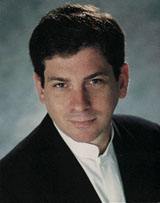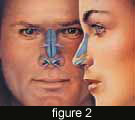

DR. WARREN LENT
150 N. Robertson Blvd, Suite 140
Beverly Hills, California 90211
(310) 652-6500
info@mybestplasticsurgeon.com

Rhinoplasty: The Procedure
The nose is the most prominent and defining feature of the face. When properly sized and balanced, the nose can be the source for a very pleasing facial appearance, but there can be much displeasure when even one part of the nose is out of proportion. Rhinoplasty, colloquially known as a "nose job", is the surgical procedure designed to correct deformities, disproportions or breathing disorders found in the nose.
 The process begins with a careful evaluation of all the components of the nose. The bridge, the tip, the width, the front and side views are all evaluated for symmetry and proportion. Additionally, the nose is evaluated, internally, for any possible sources of obstruction, which interfere with breathing. A careful plan is developed prior to beginning the procedure, with the goal of achieving a well-balanced nose where all the components are well proportioned to one another and the overall shape is well proportioned to the entire face.
The process begins with a careful evaluation of all the components of the nose. The bridge, the tip, the width, the front and side views are all evaluated for symmetry and proportion. Additionally, the nose is evaluated, internally, for any possible sources of obstruction, which interfere with breathing. A careful plan is developed prior to beginning the procedure, with the goal of achieving a well-balanced nose where all the components are well proportioned to one another and the overall shape is well proportioned to the entire face.
The nasal framework consists of about two-thirds cartilage and one-third bone. It is this underlying framework that determines the size, shape and proportions of the nose. Correction of any nasal deformities is done by altering this cartilage and bony structure (figure 1).
There are two basic methods with which Rhinoplasty can be performed; the "open" and the "closed" techniques. The "closed' method involves incisions which are entirely hidden on the inside of the nose. The "open" method adds a small incision to the narrowest portion of the under surface of the nose. The benefit of this extra incision is that it will allow Los Angeles Plastic Surgeon, Dr. Warren Lent, greater ability to see and correct deformities. The added incision is usually very difficult to see once it has healed and allows for much greater flexibility in repairing the nose. 
During the operation the patient is usually fully asleep, under general anesthesia. Beverly Hills, Cosmetic Surgeon, Dr. Lent, will perform the pre-planned procedure by a combination of removing excess tissue, altering the cartilage and bone or adding to the structure when needed (figure 2).
 At the conclusion of the procedure, packing may be placed inside the nose, to reduce bleeding and an external splint is usually applied to help maintain the new shape and protect the nose. The packing is usually removed one to two days after surgery. The splint is usually removed after one week, as are any external sutures (figure 3).
At the conclusion of the procedure, packing may be placed inside the nose, to reduce bleeding and an external splint is usually applied to help maintain the new shape and protect the nose. The packing is usually removed one to two days after surgery. The splint is usually removed after one week, as are any external sutures (figure 3).
It is important to remember that the healing process is a slow gradual one. The new shape can be assessed right after the removal of the splint, but there will be some residual swelling that can last for several months following the procedure.







